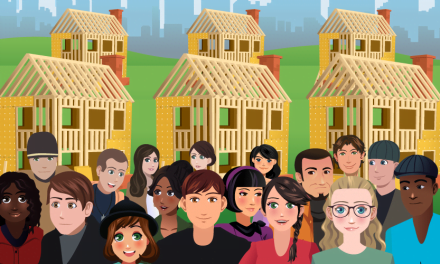Christmas around the world
Regardless of your beliefs, Christmas celebrations and traditions in the United States have become a prominent part of American culture. Globally, the Christmas season is celebrated in a variety of ways. We here at first tuesday present a brief look at the Christmas celebrations of select countries around the world.
Australia
In December, Australians experience temperatures reaching over 85 degrees so it’s safe to say there will not be a white Christmas in the southern hemisphere. Given the differing climates during the Christmas season of the United States and Australia, one might expect different customs as well. Sure enough, Australia does not disappoint.
On Christmas Eve, thousands of Australians come to Melbourne to sing a variety of traditional Christmas songs at the “Carols by Candlelight” event. At this event participants hold a lit candle, mimicking stars in the night sky. “Carols by Candlelight” is a culmination of similar events occurring in preceding weeks in major cities throughout the country.
On Christmas, you will find many locals and tourists alike eating their dinner midday, on the beach. Families use this time spent together to have pool-time, picnics, play cricket or spend time engaging in a number of outdoor activities. The traditional Australian Christmas dinner includes turkey, ham or pork as the main dish while enflamed plum pudding is served as desert. During the Australian gold rush, some of these puddings were served with a gold nugget inside but today, the nugget has been replaced by a small favor. The finding of this favor is believed to bring anyone who finds it good luck in the coming year.
Santa Claus will not be seen trudging through snow in this part of the world. Rather, he can be visited at the beaches, either on a surfboard or a lifesaving boat.
Belgium
Belgians celebrate Christmas on December 6th of each year. Sinter Klaas, the Belgian equivalent to Santa Claus, resides in Spain and is said to travel with a dark-skinned helper, Zwarte Piet (meaning black Pete). Zwarte Piet helps to keep kids “in line” by punishing disobedient children. No worries, it’s all in good fun!
The morning of December 6th, gifts are placed under the Christmas tree or stockings hung near the fireplace. Later, families have breakfast together. This meal is composed primarily of cougnu, sweet bread in the shape of baby Jesus. In addition to a family breakfast, some families continue the celebration into the evening with another special meal.
December 25th is not a Belgian day of gift giving as it is more generally a day for religious observances.
Brazil
Since the country that is now Brazil started out as a Portuguese colony, many Christmas customs are of the Portuguese persuasion. A strong, Catholic influence is no exception; for example, many Brazilians will attend a Christmas Eve midnight mass (Missa do Galo) and another mass the next day. The Brazilian version of Santa Claus is known as Papai Noel and is said to reside in Greenland, dressed in silk clothing since Brazil is so warm in December.
For those who can afford it, a traditional Christmas meal is prepared and includes chicken, turkey, ham, rice, salad, pork, fruit and beer. This dinner is called Ceia de Natal.
Christmas festivities include folk dancing and singing and continues until January 6th.
Finland
The people of Finland believe Father Christmas or Joulupukki, meaning yule goat, lives in and operates his workshop (with the help of the elves, of course!) in the Arctic Circle in the northern Finnish region of Korvantunturi. This is also the home of Joulupukki’s reindeer! People from all over the world who write to Santa Claus send letters to him here.
On the morning of Christmas Eve, Finlanders will eat rice, porridge and plum juice. Then, the tree will usually be decorated next using apples and other fruits, candies, paper flags, cotton, tinsel and candles. In the evening, dinner is normally consumed between the hours of five and seven, after the appearance of the first star in the sky. A traditional Christmas Eve dinner includes a variety of macaroni, rutabaga, carrot and potato casseroles in addition to boiled codfish, roast pig or ham as the main entree.
In the Finnish tradition, children receive presents from Joulupukki and about six elves who knock on the front door on Christmas Eve, rather than sliding down the chimney. Christmas gifts may be exchanged before or after the dinner. After the gift exchange and dinner, the children go to bed while adults stay up talking and drinking coffee until around midnight.
As the people of Finland say, “Merry Yule!”
For more information about world-wide Christmas celebrations, visit:
http://www.worldofchristmas.net/christmas-world/index.html or


















